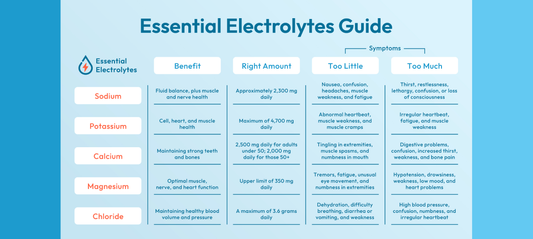More than eight out of 10 people in the United States alone own a smartphone, and nearly half of them say they can’t live without it.
It sounds extreme, but there’s some truth to that. Everything from banking to bill paying is set up to be easier with a smartphone. Boarding a plane, attending a concert, finding an address, or simply staying in touch – it would be unfair to ask us to do any of this the old-fashioned way when the perks are obvious.
But what happens when you feel too dependent on your devices? Let’s discuss how to scale back with a tech detox. Here’s how to enjoy all of the stress relief benefits without being completely cut off from the world.
What is a digital detox?
A digital detox is reducing the usage of smartphones, computers, tablets, or other screens and devices that have internet connectivity.
Common digital detox challenges see participants cutting off all online activity for a period of 24 hours, three days, or even three weeks.
While this can be beneficial, what we’re discussing is reducing overall long-term usage. It may take a month or more to become a habit. Yet the impact will be greater than if you just went cold turkey for a day or two, only to go right back to your old hours-long screen times.
Possible Mental Health Benefits of a Digital Detox
Data suggests that on average, we check our phones every 10 minutes. Here’s what we gain when we cut that in half.
Better connections with those around us.
Ask anyone who has stuck with a tech detox what the biggest benefit was, and this is likely to be at or near the top of their list. Personal relationships improve with just a little more undivided attention, and our mental health depends on those connections.
You may not realize how much your screen time is cutting into face-to-face interactions. The average adult spends five to six hours looking at a screen daily. Even if you’re speaking to or in the same room as others, you’re missing out on eye contact and other cues that help build stronger connections and clearer communication.
Fewer emotional ups and downs.
News headlines, notifications, an endless stream of short video clips. The sheer range of content we’re exposed to daily pulls our minds (and moods) in every direction. However, if you reduce your cell phone usage by just one hour daily, you could enjoy a more stable, satisfying life.
Yes, just an hour. One study following approximately 500 adults had them cut back on digital devices by an hour and increase physical activity by 30 minutes.
The results were reduced symptoms of depression and anxiety, as well as reduced desire to use a smartphone.
Enhanced sleep quality.
Quality sleep is foundational to your ability to manage stress. The blue light from your phone delays the production of melatonin. Drifting off becomes harder without this sleep-inducing hormone.
Blue light filters or glasses are not proven effective. And if you think popping a melatonin gummy is the answer, know that you can build a tolerance and see its efficacy decrease over a few weeks.
Therefore, the best way to avoid device-related sleep problems is to simply put it all away one hour before you want to be asleep.
How to Detox from Tech
Fighting the urge to look at your phone does not have to be an all-or-nothing battle. Begin a gradual yet effective detox today with a few of these tips.
1. Take it one screen at a time.
Have you ever found yourself scrolling through your phone while “watching” TV? While sitting in front of your laptop? Eliminate layering on device dependency by making a hard rule: no more than one screen at a time.
2. Adjust your settings.
To be blunt, there’s no reason to have notifications on for most apps. Turn off everything that isn’t completely necessary, including all social media and emails.
From there, you can make your device a little less visually alluring. Try switching your phone’s display to grayscale; everything will now be black and white.
3. Perform a purge.
Now it’s time to delete some apps. If there’s one app you find yourself spending more time than you’d like on, go ahead and do a real detox by deleting it for a week.
Otherwise, just clean out the ones you resort to when you feel you have nothing else to look at.
Next, hop over to your social media account and unfollow accounts that are distracting, distressing, or just plain irrelevant to you.
4. Know when to log off completely.
Meetings, dinner time, a family member asking a question. The concept of a “no phone zone” isn’t new, but it helps to tailor this to your life. Identify those times when you know you should not be staring at your phone and commit to keeping it out of the way.
If you’re unsure, a good place to start is an hour before bed and an hour after waking. From there, add meal times and during work breaks. Most importantly, remember to put your phone down any time someone in the real world speaks to you.
5. Go out more.
Stepping into the great outdoors provides a breath of fresh air, quite literally. It's a chance to soak in the beauty of nature, relish the warmth of the sun on your skin, and savor the sounds of birds chirping and leaves rustling.
So, power down those devices, put on your sneakers, and get ready to rediscover the joys of the outside world.

What are the disadvantages of tech detox?
If you’re smartphone-dependent and quit cold turkey, you could experience symptoms like racing thoughts, anxious feelings, and a depressed mood. Locking your phone away for days on end can also increase feelings of loneliness.
This is why a more sustainable reduction in usage is of more benefit. It’s also key to clean up your media diet and consume “healthier” forms of content.
Live More with LivPur
Decrease the digital, increase the physical. It’s a proven strategy for stress relief and overall well being.
LivPur is there for your recovery. Our post-exercise Recovery blend assists further in controlling cortisol, reducing oxidative stress, and fostering balance in all areas.




